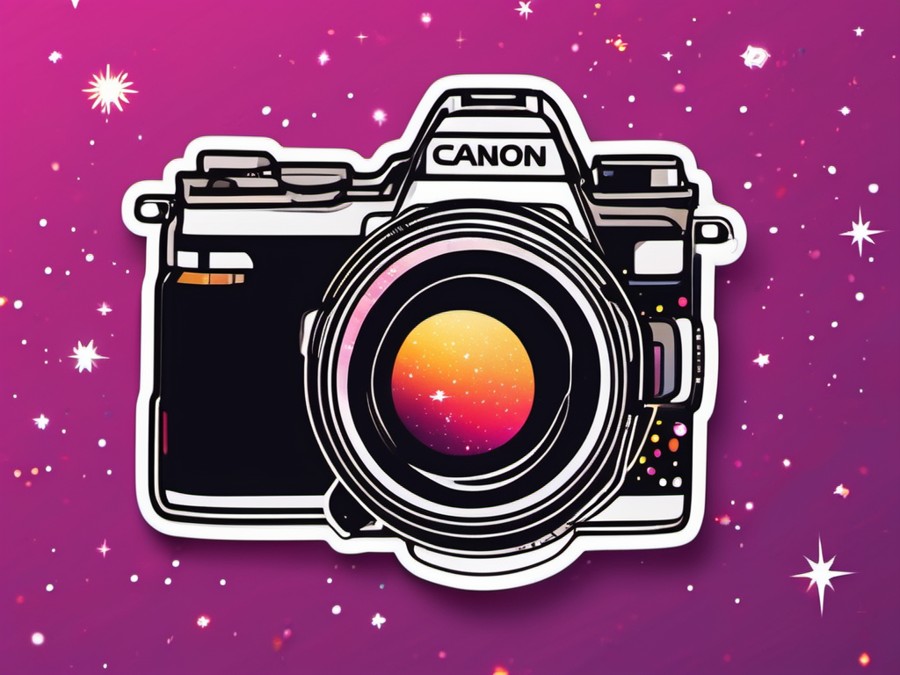· Charlotte Will · Photography Tips for Canon Cameras · 6 min read
How to Capture Clear Close-Ups from a Distance with Your Canon SLR Camera
This article contains affiliate links, which means that if you click on one of the product links and make a purchase, we may receive a small commission at no additional cost to you. We only recommend products and services that we believe in and think will add value to our readers.
Capture stunning close-ups from a distance with your Canon SLR camera. Learn how to use the Canon EF 75-300mm f/4-5.6 III Telephoto Zoom Lens for crisp, detailed shots of wildlife and landscapes.

Capturing clear close-ups from a distance can be one of the most challenging yet rewarding aspects of photography. Whether you’re trying to capture a portrait of a shy subject or a close-up of wildlife in its natural habitat, the ability to zoom in without compromising image quality is crucial. In this article, we’ll explore the common problems faced by photographers when attempting to capture clear close-ups from a distance and provide practical solutions using the Canon EF 75-300mm f/4-5.6 III Telephoto Zoom Lens for Canon SLR Cameras.
Common Problems in Capturing Clear Close-Ups from a Distance
Blurry Images Due to Shaking Hands
One of the most common issues when trying to capture close-ups from a distance is camera shake. Even the slightest movement can result in blurry images, especially when using a telephoto lens. This is particularly challenging when you’re trying to capture subjects that are far away and require a longer focal length.
Inadequate Zoom Range
Another problem is the inability to get close enough to your subject. Many lenses have a limited zoom range, which can make it difficult to capture the details you want from a distance. This is especially true for wildlife and nature photography, where subjects are often far away and require a significant amount of zoom.
Poor Lighting Conditions
Low light conditions can also pose a significant challenge when trying to capture clear close-ups from a distance. Telephoto lenses often have slower apertures, which can make it difficult to get a sharp image in low light situations. Additionally, the longer focal lengths can exacerbate camera shake in poor lighting conditions.
Introducing the Canon EF 75-300mm f/4-5.6 III Telephoto Zoom Lens
The Canon EF 75-300mm f/4-5.6 III Telephoto Zoom Lens is an excellent solution for capturing clear close-ups from a distance. This lens offers a versatile zoom range and is designed to work seamlessly with Canon SLR cameras. With its improved mechanism, zooming is smoother and more precise, allowing you to capture sharp images even from a distance.

You can purchase this lens from Amazon.
Pros and Cons of the Canon EF 75-300mm f/4-5.6 III Telephoto Zoom Lens
Pros:
- Affordable Price Point: This lens is one of the most affordable long telephoto zooms available, making it an excellent choice for beginners and intermediate photographers.
- Versatile Zoom Range: The 75-300mm focal length is perfect for a variety of subjects, from portraits to wildlife and nature.
- Compact Design: Despite its powerful zoom, the lens is compact and easy to carry around.
Cons:
- No Image Stabilization: The lack of image stabilization can make it more challenging to capture sharp images in low light conditions.
- Slower Aperture: The maximum aperture of f/4-5.6 is slower compared to some other lenses, which can affect performance in low light situations.
- No USM Motor: The use of a DC motor instead of a USM motor can result in slower autofocus performance.
Who Would Benefit from This Lens?
This lens is ideal for beginner to intermediate photographers who are looking to capture clear close-ups from a distance without breaking the bank. Whether you’re into wildlife photography, nature photography, or simply want to capture intimate portraits from afar, this lens offers the versatility and affordability you need.
Scenarios Where This Lens Shines
- Wildlife Photography: The 300mm focal length allows you to capture close-ups of animals in their natural habitat without disturbing them.
- Sports Photography: With its smooth zoom mechanism, you can quickly adjust the focal length to capture action shots from a distance.
- Nature Photography: The versatile zoom range makes it perfect for capturing the details of landscapes and distant subjects.
Step-by-Step Instructions on Using the Canon EF 75-300mm f/4-5.6 III Telephoto Zoom Lens
- Mount the Lens: Attach the lens to your Canon SLR camera by aligning the red dot on the lens with the red dot on the camera body and turning it clockwise until it clicks into place.
- Set Up Your Camera: Choose the appropriate shooting mode (e.g., Aperture Priority or Shutter Priority) and set your ISO to a value that suits the lighting conditions.
- Focus on Your Subject: Use the autofocus to lock onto your subject. If you’re shooting in low light conditions, consider using a tripod to minimize camera shake.
- Adjust the Zoom: Turn the zoom ring to frame your subject as desired. The smooth mechanism will allow you to make precise adjustments.
- Capture the Shot: Press the shutter button to capture your image. Experiment with different focal lengths to achieve the desired composition.
Quick Takeaways
- Camera Shake: Use a tripod or increase your shutter speed to minimize camera shake.
- Zoom Range: The Canon EF 75-300mm f/4-5.6 III offers a versatile zoom range for various subjects.
- Lighting Conditions: Be mindful of lighting conditions and consider using a tripod in low light situations.
- Practice Makes Perfect: Spend time practicing with your lens to get a feel for its capabilities and limitations.
- Experiment: Don’t be afraid to experiment with different focal lengths and compositions.
Conclusion
Capturing clear close-ups from a distance can be challenging, but with the right lens and techniques, it’s entirely possible. The Canon EF 75-300mm f/4-5.6 III Telephoto Zoom Lens is an excellent choice for beginners and intermediate photographers looking to enhance their photography skills. Whether you’re into wildlife, sports, or nature photography, this lens offers the versatility and affordability you need to capture stunning close-ups from a distance.
So, what are you waiting for? Grab your Canon SLR camera and the Canon EF 75-300mm f/4-5.6 III Telephoto Zoom Lens, and start capturing those incredible close-ups today!
FAQs
What is the best way to minimize camera shake when using a telephoto lens?
Using a tripod or increasing your shutter speed can help minimize camera shake when using a telephoto lens. Additionally, consider using the camera’s built-in image stabilization feature if available.
How do I choose the right focal length for my subject?
The choice of focal length depends on the distance between you and your subject. For close-ups, a longer focal length is typically required. Experiment with different focal lengths to achieve the desired composition.
What are some tips for capturing clear images in low light conditions?
In low light conditions, consider using a tripod to minimize camera shake. Increase your ISO and use a slower shutter speed to allow more light into the camera. Additionally, consider using a lens with image stabilization for better results.
How can I improve my autofocus performance when using a telephoto lens?
To improve autofocus performance, make sure your lens is clean and free of any obstructions. Use the camera’s autofocus points to lock onto your subject, and consider using continuous autofocus (AF-C) for moving subjects.
What are some common mistakes to avoid when capturing close-ups from a distance?
Some common mistakes to avoid include not using a tripod in low light conditions, not considering the background of your shot, and not experimenting with different focal lengths. Additionally, be mindful of camera shake and use appropriate techniques to minimize it.
How Can I Improve My Close-Up Photography Skills?
Improving your close-up photography skills requires practice and patience. Start by understanding the basics of composition and lighting, and then experiment with different techniques and equipment. Consider taking online courses or workshops to learn from experienced photographers. Additionally, join photography communities and forums to share your work and get feedback from others.
Don’t forget to share your amazing close-up shots on social media and inspire others with your photography journey!




